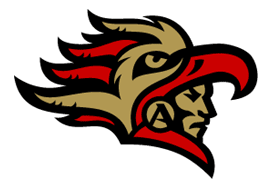
 |
 |
Star Trek, Culture, and History explores the cultural phenomenon known as Star Trek. By reading critical academic studies of Star Trek and analyzing numerous episodes viewed in class, this course will address how Star Trek—its five television series, thirteen movies, and more than a thousand novels--reflected historical events, forces, and ideas from 1960s to the present. In particular we will investigate the relationship between the several television series and the larger historical and cultural context in which they took place. The course will also examine Star Trek’s use of historical settings and moments from ancient Rome to WWII as well as explore how Star Trek addressed important contemporary social and cultural issues ranging from race and gender to sexuality and politics.
|
|
|
|
|
|
|
|
|
|
|
|
|
|
|
|
Student Learning Outcomes:
1. Students will understand and analyze how Star Trek reflected the historical forces and ideas of the late twentieth century.
2. Students will investigate how Star Trek addressed contemporary issues of race, gender, sexuality, and politics.
3. Students will explore and critically analyze both primary and secondary source material.
4. Students will probe the nature of historical interpretation.
5. Students will undertake historical research using primary source material and improve writing skills.
A brief note on grades: A student will earn an “A” for only excellent and outstanding work. A “B” represents very good work, which means more than just doing the job. A “C” is given to those who demonstrate adequate competence and satisfactory completion of assignments. “D” work is that which fails to demonstrate competence and/or fails to fully complete the assignment. I don’t think I need to explain the meaning of an “F” to you. Finally, I always assume that each student puts his or her full effort into an assignment, so please don’t try to make a case for a higher grade based on how much time and effort you put into an assignment. I can only grade performance not effort.
Please be aware that the major themes and ideas that comprise my exams are generally drawn from my lectures so attendance is critical if you wish to do well in this course. Readings, both from the text and the other assigned books, are not extra or optional assignments. The readings complement, but do not replace, my lectures and are there to help you better understand major themes and issues raised in class. One key to success in this course is to keep up with the reading assignments.
SDSU Academic Honesty Policy:
Institutions of higher education are founded to impart knowledge, seek truth, and encourage one’s development for the good of society. University students shall thus be intellectually and morally obliged to pursue their course of studies with honesty and integrity. Therefore, in preparing and submitting materials for academic courses and in taking examinations, a student shall not yield to cheating or plagiarism, which not only violate academic standards but also make the offender liable to penalties explicit in Title 5.
Cheating shall be defined as the act of obtaining or attempting to obtain credit for academic work by the use of dishonest, deceptive, or fraudulent means. Examples of cheating include, but are not limited to (a) copying, in part or in whole, from another’s test or other examination; (b) discussing answers or ideas relating to the answers on a test or other examination without the permission of the instructor; (c) obtaining copies of a test, an examination, or other course material without the permission of the instructor; (d) using notes, cheat sheets, or other devices considered inappropriate under the prescribed testing condition; (e) collaborating with another or others in work to be presented without the permission of the instructor; (f) falsifying records, laboratory work, or other course data; (g) submitting work previously presented in another course, if contrary to the rules of the course; (h) altering or interfering with the grading procedures; (i) plagiarizing, as defined; and (j) knowingly and intentionally assisting another student in any of the above.
Plagiarism shall be defined as the act of incorporating ideas, words, or specific substance of another, whether purchased, borrowed, or otherwise obtained, and submitting same to the University as one’s own work to fulfill academic requirements without giving credit to the appropriate source. Plagiarism shall include but not be limited to (a) submitting work, either in part or in whole, completed by another; (b) omitting footnotes for ideas, statements, facts, or conclusions that belong to another; (c) omitting quotation marks when quoting directly from another, whether it be a paragraph, sentence, or part thereof; (d) close and lengthy paraphrasing of the writings of another; (e) submitting another person’s artistic works, such as musical compositions, photographs, paintings, drawings, or sculptures; and (f) submitting as one’s own work papers purchased from research companies. Those guilty of committing plagiarism or cheating will receive an F for both the assignment and the entire course.
“Students agree that by taking this course all required papers may be subject to submission for textual similarity review to Blackboard's SafeAssign for the detection of plagiarism. All submitted papers will be included as source documents in SafeAssign reference database solely for the purpose of detecting plagiarism of such papers. You may submit your papers in such a way that no identifying information about you is included. Another option is that you may request, in writing, that your papers not be submitted to SafeAssign. However, if you choose this option you will be required to provide documentation to substantiate that the papers are your original work and do not include any plagiarized material.”
If you are a student with a disability and believe you will need accommodations for this class, it is your responsibility to contact Student Disability Services at (619) 594-6473. To avoid any delay in the receipt of your accommodations, you should contact Student Disability Services as soon as possible. Please note that accommodations are not retroactive, and that accommodations based upon disability cannot be provided until you have presented your instructor with an accommodation letter from Student Disability Services. Your cooperation is appreciated.
Class Etiquette: Please arrive on time and do not leave before the end of class unless you inform me prior to class. Also, please be sure cell phones and beepers are off or on silent and not visible on your desk. This also means no text messaging in class. Finally, laptops can only be used to take notes. Students who use a laptop must email their notes to me at the end of class to prove that the laptop was used for notes only.